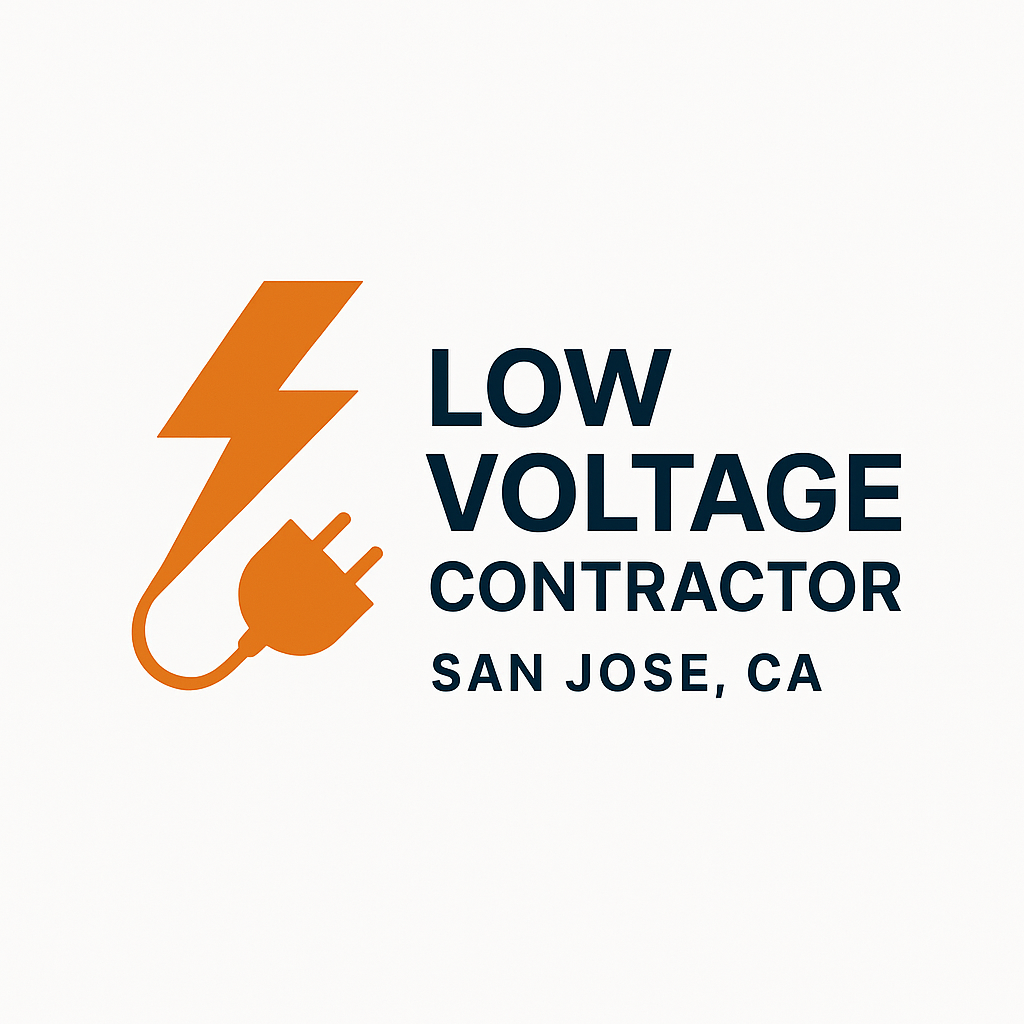San Jose Low Voltage Building Codes Explained: What You Need to Know
Low voltage systems including data cabling, security systems, fire alarms, access control, and structured wiring — are essential in modern buildings. But in San Jose, these systems must comply with specific municipal codes, state regulations, and safety standards. This blog provides an in-depth look at San Jose’s building code requirements for low voltage installations, what you need to plan for, and how professionals navigate the regulatory environment.
Why Low Voltage Codes Matter
- Safety and reliability: Though “low” in voltage, these systems still carry risk. Compliance ensures proper grounding, insulation, and protection from interference.
- Interference and signal integrity: Following separation rules and conduit standards helps avoid signal interference with power lines.
- Inspection and acceptance: Projects are subject to municipal plan review and field inspections. Noncompliance can cause delays or rework.
- Insurance and liability: If systems fail or cause damage, insurance claims may be denied if they weren’t installed per code.
Regulatory Framework in San Jose
State and National Standards
Even though local rules govern installations, California and national standards serve as the backbone:
- California Electrical Code (CEC): Adopts and amends the National Electrical Code (NEC). It includes chapters that apply to low voltage, communications, fire alarm, and signaling systems.
- NEC Article 725, 800, 820, 830: Address various classifications of low voltage circuits, communications, fiber optics, and network-powered broadband.
- California Building Code (CBC): May intersect where low voltage systems cross into fire/life safety systems or structural penetrations.
In San Jose, the municipal building department enforces these with local amendments.
San Jose Municipal Requirements
- Permit requirement: Any new low voltage installation or major upgrade typically requires a permit. You must submit detailed plans showing cable types, pathways, conduit, terminations, junctions, grounding, and related equipment.
- Plan review standards: Plans are reviewed for compliance with conductor fill, conduit sizing, separation from power lines, wire types (plenum, riser, non-plenum), labeling, and grounding.
- Inspection points: Inspections may include before concealment (i.e. prior to covering walls or ceilings), intermediate inspection, and final acceptance after the system is fully installed and tested.
- Seismic and structural coordination: Low voltage cable trays, brackets, conduits that penetrate floors or walls must comply with structural design, including seismic bracing if applicable.
- Fire stopping and penetrations: Where cables or conduits pass through fire-rated walls or ceilings, firestop materials must be used. Any patching must be inspected and maintained.
- Accessibility and clearances: Pull boxes, equipment racks, and panels must be accessible; adequate working clearances must be maintained.
- Labeling and documentation: All cables, terminations, panels, and equipment must be labeled clearly. As-built drawings and documentation may be required for acceptance.
Key Technical Requirements and Best Practices
Cable Types and Ratings
- Use cables rated for the appropriate environment — plenum, riser, or general purpose.
- Shielded and unshielded cables must follow separation guidelines from electrical conductors.
Conduit and Pathways
- Conduit sizing must allow for proper fill (typically 40 percent or less for multiple cables).
- Bends must obey maximum bend radius.
- Use pull boxes or junction boxes where needed to facilitate pulls.
- Cable trays must be properly supported, grounded, and braced.
Grounding and Bonding
- All metallic portions of low voltage systems must be bonded to the building grounding system.
- Use bonding conductors sized per code tables.
- Avoid ground loops; provide single-point bonding where required.
Separation from Power Conductors
- Maintain minimum separation distances or use barrier segregation or separate conduits to prevent electromagnetic interference and comply with code.
- Avoid parallel runs of low voltage and high voltage lines unless adequate spacing or shielding is provided.
Fire Rating and Penetrations
- Use listed firestop assemblies where cables or conduits cross fire-rated assemblies.
- Verify that firestop materials match the local fire code rating.
- Any penetration repair or maintenance must preserve the fire-resistive integrity.
Local Considerations in San Jose
San Jose’s building department is rigorous about consistency with the rest of Santa Clara County requirements. Some local factors to keep in mind:
- High seismic zone: Because the area is seismically active, cable support systems often require special bracing or flexible conduit in critical zones.
- High-rise or mixed-use buildings: Projects in downtown San Jose or near transit corridors often involve stricter scrutiny on public safety systems (alarms, surveillance) and redundancy.
- Historic and retrofit properties: When installing low voltage in older buildings, the building department may require additional structural review or special routing to preserve historic features.
- Green building and energy standards: San Jose encourages energy-efficient design and may require low voltage systems (e.g., smart networks, building automation) to meet energy codes or integration standards.
Conclusion
If you are planning a low voltage installation or upgrade in San Jose, understanding and adhering to local building codes is critical to ensure safety, reliability, and compliance. You’ll need to align with California’s electrical and building codes as well as San Jose’s municipal rules regarding permits, inspections, firestopping, seismic requirements, cable pathways, grounding, and more. Engaging a knowledgeable local low voltage contractor or electrical engineer early in the design process can prevent costly rework and delays. Always verify permit and inspection requirements with the San Jose Building Department before beginning any work.
